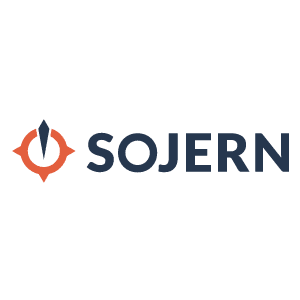 Digital marketers are currently being faced with a once-unimaginable shift: the end of third-party cookies. Over the past few years, users have become more aware of how companies track their data, and they’ve started pushing back on an increasingly intrusive online experience. Regulators have even stepped in and enacted laws to protect users, including GDPR in Europe and the CCPA in California. At the same time, the rise of mobile has decreased the value of browser-based, desktop-focused cookies. As a result, marketers are scratching their heads as to how they will proceed.
Digital marketers are currently being faced with a once-unimaginable shift: the end of third-party cookies. Over the past few years, users have become more aware of how companies track their data, and they’ve started pushing back on an increasingly intrusive online experience. Regulators have even stepped in and enacted laws to protect users, including GDPR in Europe and the CCPA in California. At the same time, the rise of mobile has decreased the value of browser-based, desktop-focused cookies. As a result, marketers are scratching their heads as to how they will proceed.
Meanwhile, experts are predicting that U.S. companies are going to spend 15% more on advertising this year, as vaccinations outpace previous expectations and consumer confidence surges. Based on impressive Q1 numbers from tech giants Google, Facebook, and Amazon, digital marketing is taking the majority of ad spend, with more people spending more time online. The industries hardest hit are the ones coming back strongest, and it’s no surprise that travel is leading the charge — Expedia recently launched its largest brand-marketing campaign in five years.
The return of travel and this increase in marketing spend come at an important turning point — a shift in how society perceives (and regulates) privacy and data protection. Google is going cookie-less by 2022, while others, such as Apple and Facebook, have similar efforts to shift the way that users are tracked online. Without a doubt, this has enormous implications for your hotel’s digital marketing. However, it’s also an opportunity to get an edge on your competition and showcase the hospitality industry’s guest-first approach. Read on to learn about how you can set your hotel up for success in 2022.
What’s happening with cookies
Cookies come in two flavors: first-party and third-party. A first-party cookie is owned by the same domain that puts it on a user’s browser. First-party cookies help individual websites learn more about users, optimize the experience, and enhance analytics. Here are a few things you can do thanks to first-party cookies:
- Identify returning visitors to your website to increase the precision of your marketing attribution models
- Save an e-commerce cart so that you can load it again upon return
- Autocomplete forms for users
- Allow returning users to skip sign-in and store preferences
If that same cookie also tracks behavior on other websites or is from a company that’s not the website owner, it’s a third-party cookie. Since that cookie stays on the user’s device, the “owner” of that cookie (the third party) can connect behavior across websites over extended periods of time. Third-party cookies also facilitate:
- Targeted remarketing across websites so that you can re-engage abandoned carts or other people that have visited your website recently
- Aggregated insights so that you can target similar users with your ads
- Gathering data on individual users to enhance segmentation
- Linking users across different third-party databases to improve targeting
As you can see, third-party cookies can collect a lot of information about users, often without any opt-ins, clear disclosures, or granular controls for consumers. It’s a fairly opaque industry — and that’s why many consumers have begun to push back by using ad blockers and privacy-oriented browsers. Instead of fighting a losing battle, Big Tech is making the first move. By 2022, Google will remove third-party cookies from its Chrome browser, which has over 60% market share. Mozilla’s Firefox and Apple’s Safari will also block third-party cookies by default.
However, the end of third-party cookies doesn’t mean an end to online programmatic advertising — it just means an increased focus on first-party cookies. First-party cookies are only blocked by 5% of web users, meaning users accept them as a worthwhile trade for an enhanced experience. Facebook now offers a first-party version of its Facebook Pixel so that sites can continue to collect data, allowing them to still measure performance and build audiences.
Mobile tracking follows suit
Cookies aren’t the only thing changing in the world of data tracking. Apple recently moved to an opt-in model for its Identifier for Advertisers (IDFA), which is a unique code that attaches a device to its digital footprint. Now, when a user downloads an app that utilizes IDFA to track and target audiences, they are met with an opt-in prompt that asks for permission for the app to “track you across apps and websites owned by other companies.”
Apple knows that the vast majority of users (by some estimates 90% or more) will not opt-in to this kind of tracking when given an explicit choice. This is a huge blow to marketers who rely on this information to track and manage the success of their campaigns. Apple’s move will also significantly impact the two largest platforms for mobile acquisitions: Facebook and Google. Facebook will have significantly less data to feed into its massive profit engine, and Google will likely switch to opt-in for its IDFA equivalent, the Google Ad Identifier (GAID). With third-party cookies already on the way out for desktop data, this loss of mobile data is massive.
Where do we go from here?
Cookies and device IDs have become so important, it’s hard to imagine digital marketing without them. Hoteliers will need to make some changes — and quickly — if they want to continue to personalize targeting and messaging based on granular data. But never fear — we’ve outlined the first steps you need to take to ensure a seamless and successful transition into this new era of digital marketing.
1. Focus on first-party data
This is the most critical task for any digital marketer. If your website isn’t set up to properly (and legally) collect first-party data, then your digital marketing is in jeopardy. And it’s not just about collecting email addresses or tracking how a user behaves across your site.
You need to think carefully about how you decode your guestprint to give you greater insights into each guest, which can then be aggregated and anonymized into custom audiences and targetable segments. In order to find more of your best guests, then you need to know everything you can about your best guests! Your hotel CRM should aggregate key data points into rich guest profiles, such as:
- Bookings, ancillary spend, and repeat stays
- Guest demographics and psychographics
- Behavioral data, such as previous search patterns and booking window
- Intent data, such as whether they are an in-market buyer
Connecting the dots means connecting data from across your company into a single view of your guest. You’re no longer going to be able to rely on other companies to do this for you; you’ll need a MarTech stack that aligns closely with your operations to give you the most precise picture possible. In this new cookie-less world, marketers that connect the dots the best will outperform everyone else.
2. Take advantage of zero-party data
Nowadays most people are aware that their data is used to create targeted ads and offers, and they actually want that personalized experience — they just don’t want their data collected and sold discreetly. So how then do marketers get that information? One of the answers is zero-party data, which is information shared intentionally by online users. Polls, sweepstakes, newsletter sign-ups, and interactive social posts are all examples of how hoteliers can gather incredibly valuable data directly from users. Not only can you include questions about the specific travel habits or preferences most relevant to your campaigns, but users are more likely to open emails or click on banners from a brand they already interacted with and that respects their privacy.
3. Get to know Apple’s new attributes
Brands have until September to get ready to be able to measure the results of their mobile ad campaigns via Apple’s SKAdNetwork. This system allows advertisers to know which ads resulted in desired actions (like conversions) without revealing which people or which specific devices performed that action.
That said, without advertising identifiers, there’s no way to develop retargeting campaigns or lookalike audiences. As a workaround, you could consider using email addresses or phone numbers to track registered users who have opted out of the IDFA. Regardless, digital marketers will need to blend their own first-party data with custom audience builders on third-party advertising platforms.
4. Same-site attributes
This attribute lets a browser know whether first- or third-party cookies can be fired. It’s important to understand how to properly set up these attributes based on your business and publisher goals. If no course of action is taken, Google Chrome will reject the use of your cookies. Work with your web team to get everything lined up and firing accurately.
5. Privacy sandbox
There are many nuances to navigate in the “first-party” ecosystem. Google is proposing a Privacy Sandbox, which replaces third-party cookies with five APIs that perform similar functions for advertisers. The user wouldn’t know the difference, as their experience remains the same. The kinks to how this will work are still being worked out, but the main goals are to ensure programmatic advertising will live on in some type of way and to achieve greater privacy for individual users. Of course, this would all be controlled by Google, so the trade-offs are yet to be seen.
6. Contextual targeting
The decline of the third-party cookies essentially takes digital advertising back 10-15 years. Having a content strategy aligned to your brand, destination, and competitors will be key to ensure you’re reaching users who are actively engaging with content tied to travel. This will mean a return to focusing on producing and distributing relevant content.
7. Lean on Google audiences
Google Audiences are durably built from a combination of signals across Search, YouTube, Maps, and Android app downloads (over 1b users each) or 3M+ Display partner sites and apps and 3P data. Utilization of these tools will allow advertisers to target individuals based on intent and interest.
8. Tap into discovery campaigns
Reach your relevant audience across Google’s Discovery Feed with Gmail Ad Promotion and YouTube. These channels utilize first-party data and provide the ability to reach millions of users. Leveraging these tools will allow advertisers to reach users that have shown intent and target them in brand-safe environments.
Recap
Third-party cookies have proven to be an essential tool for online marketers, but now is the time for advertisers to rethink their tactics in this ever-evolving digital landscape. The sunsetting of traditional third-party cookies doesn’t end programmatic advertising, but rather pushes advertisers to explore new technologies and innovate new offerings and capabilities. It also signals the coming of more stringent policies surrounding data and privacy, meaning advertisers must continue to stay on top of compliance rules and regulations surrounding the digital landscape.
It’s a lot to navigate — but the shift toward first-party and even zero-party data will eventually be a boon to hospitality, where we already strive to learn about our guests so we can personalize our guest experience. We’re well prepared already — now we just need to evolve our marketing tech stack to reflect the opportunities of this new era!
About the author


 Tina Markowitz, Vice President of Digital Marketing Media & Analytics, oversees the data-driven digital strategy of
Tina Markowitz, Vice President of Digital Marketing Media & Analytics, oversees the data-driven digital strategy of 















